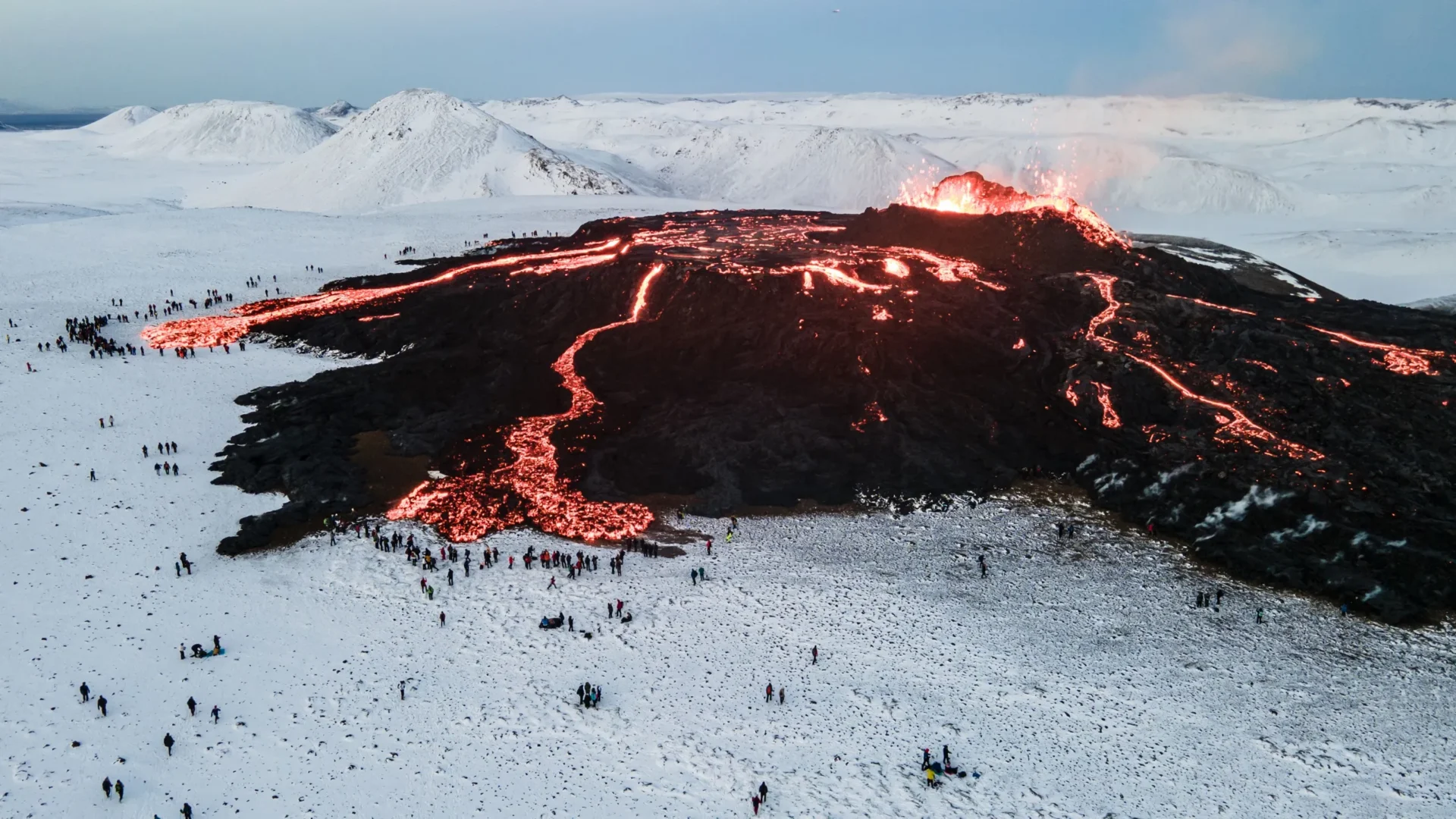Introduction:
Iceland, a land of breathtaking beauty, is a paradox wrapped in glaciers. Towering ice sheets juxtapose stark volcanic landscapes, fire, and ice existing in an uneasy yet undeniably captivating equilibrium. But beneath this surface, serenity lies a restless heart.
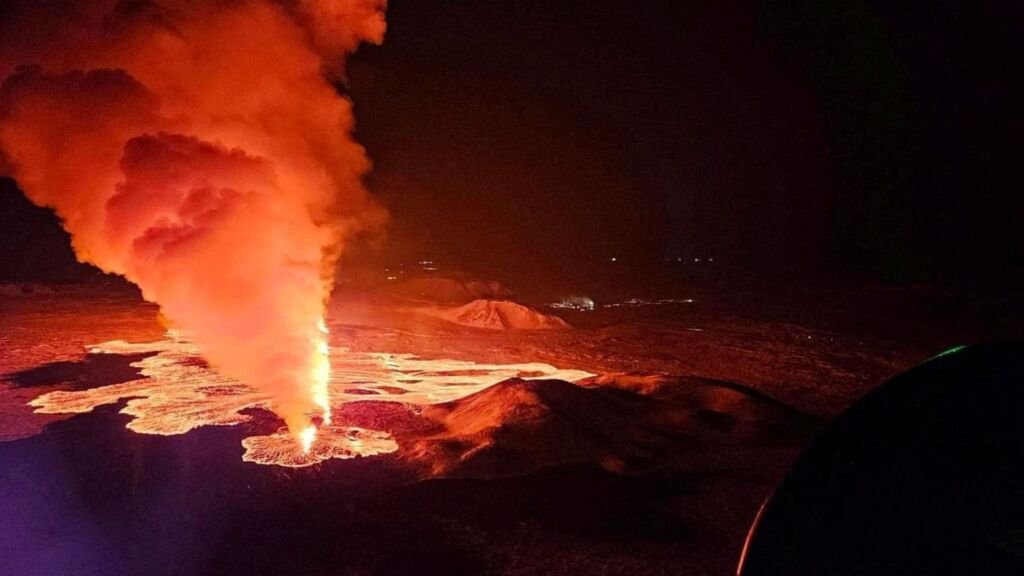
The phrase ‘volcanic eruption in Iceland’ often makes headlines, with events like the 2010 Eyjafjallajökull eruption causing widespread travel disruption across Europe. Iceland is one of Earth’s most volcanically active regions, with frequent eruptions, spewing lava and ash, and a stark reminder of the raw power that governs our planet.
But why is Iceland volcanically so active? This is a question that has captivated geologists for years. The answer lies deep within the Earth, where the very foundations of Iceland are constantly in flux. Volcanic eruptions are not merely a quirk of Icelandic geography but a fundamental aspect of the island’s very being.
Why is Iceland volcanically so active?
To understand Iceland’s fiery character, we must look at its geological position and structure. Iceland is volcanically very active because Iceland sits atop two key geological features, each contributing to its exceptional volcanic activity:
The Mid-Atlantic Ridge:
This vast underwater mountain range marks a fissure in the Earth’s crust, formed by the slow, relentless divergence of the North American and Eurasian tectonic plates. As these plates pull apart, a gap is created in the Earth’s crust. This gaping wound allows molten rock, called magma, from the Earth’s mantle to rise and erupt onto the surface.
Why is Iceland volcanically so active? In large part, it’s because the island sits directly on this giant fissure, where magma has a much easier path to the surface than most locations. Here, a special type of eruption often occurs – a fissure eruption. Imagine a long crack, sometimes stretching for kilometers, splitting open the Earth’s crust.
Through these fissures, fountains of lava erupt, creating vast lava fields that reshape the Icelandic landscape. These fissure eruptions are a frequent consequence of Iceland’s position on the Mid-Atlantic Ridge.
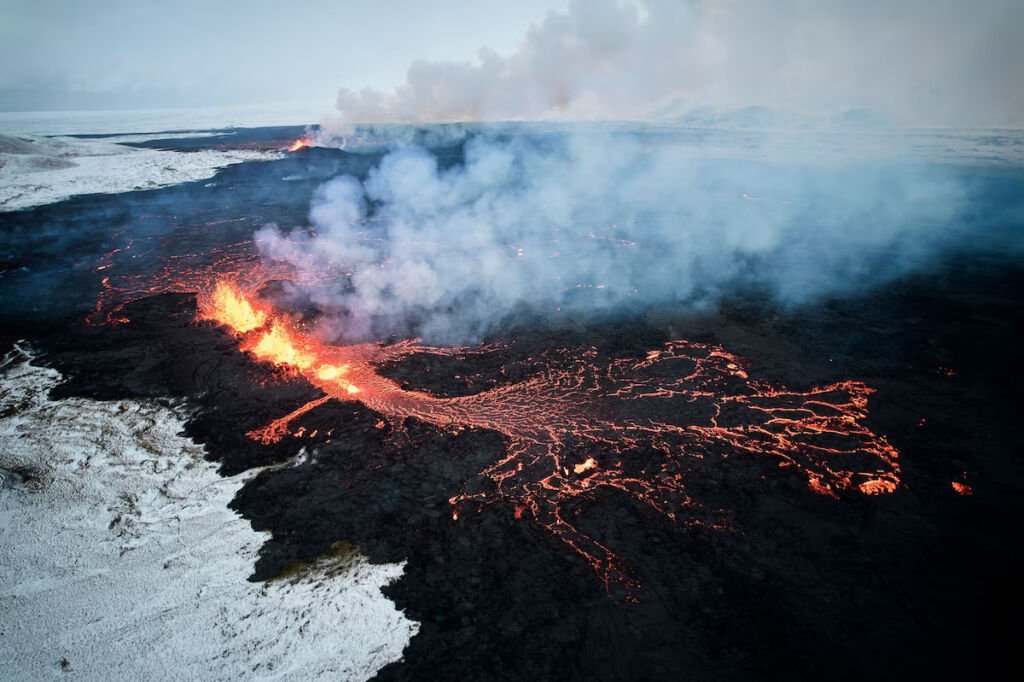
A Mantle Plume:
Adding fuel to this fiery dance is a geological feature called a mantle plume. Imagine a giant plume of hot, buoyant material rising from deep within the Earth’s mantle like a hot air balloon rising through the atmosphere. Iceland is fortunate (or unfortunate, depending on your perspective) to be right above one such plume. This plume provides an additional heat source, further melting the rock in the mantle and making it easier for magma to erupt.
Why is Iceland volcanically so active? This mantle plume acts like a supercharger, boosting the volcanic activity beyond what the Mid-Atlantic Ridge alone could produce. The extra heat from the plume can also contribute to fissure eruptions, as the increased pressure and temperature make the magma even more fluid and prone to flowing through extensive cracks.
The combined effect of these two features is a constant upwelling of molten rock beneath Iceland. Under immense pressure, this magma seeks the path of least resistance and erupts as volcanoes, shaping the island’s dramatic landscape.
So why is Iceland volcanically so active? It’s a potent combination of being situated on a major fissure in the Earth’s crust (the Mid-Atlantic Ridge) and having a super-hot mantle plume directly below, creating a geological hotspot unlike any other on Earth. This unique position allows for frequent eruptions and the dominance of fissure eruptions, making Iceland a land constantly being reshaped by fire.
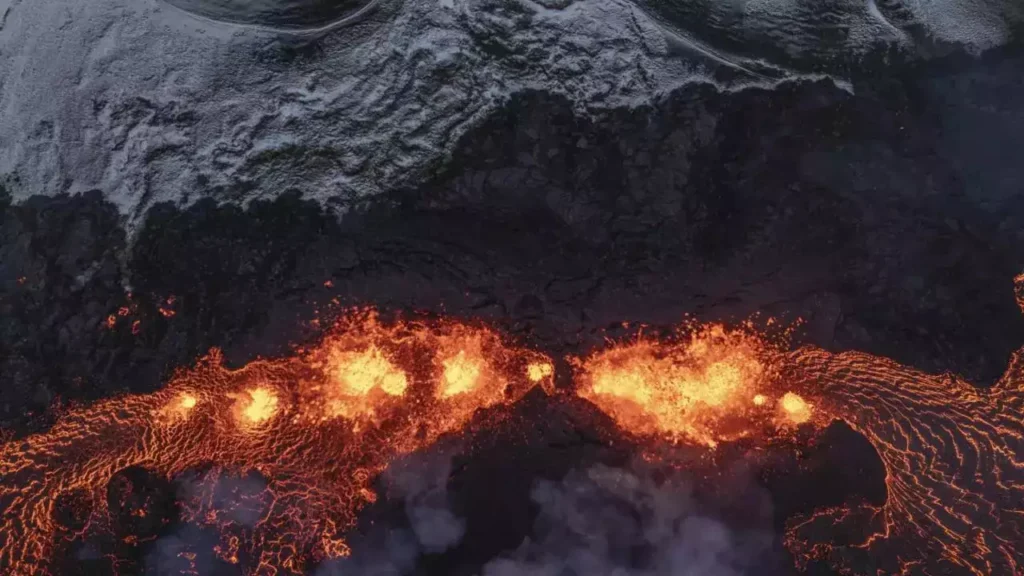
Types of Volcanic Eruptions in Iceland:
Fissure Eruptions:
The most common type in Iceland occurs when magma erupts through long, linear cracks in the Earth’s crust. Think of them as ‘curtains of fire’ that produce vast lava flows, gradually building up Iceland’s unique volcanic landscape. Iceland’s location on the Mid-Atlantic Ridge makes these fissure eruptions a defining feature.
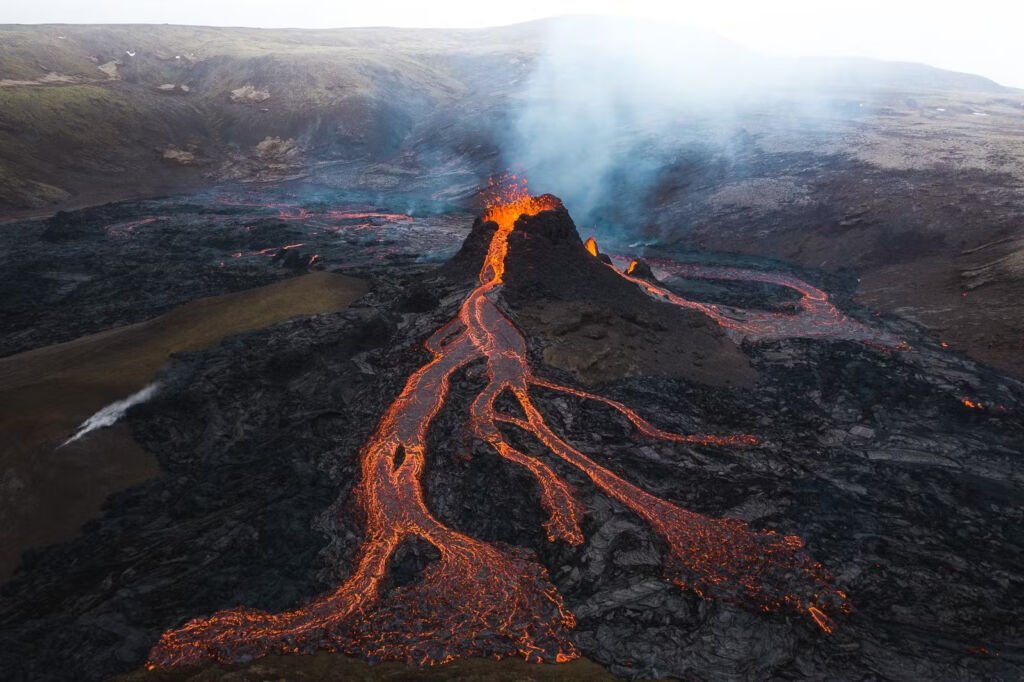
Central Volcano Eruptions:
These involve cone-shaped volcanoes, like the iconic Eyjafjallajökull. Formed by repeated layers of lava and ash, central volcanoes can produce a range of eruptions, from calm lava flows to explosive displays that send ash high into the atmosphere. While not as frequent as fissure eruptions, central volcanoes remain important to Iceland’s volcanic character.
Subglacial Eruptions:
Iceland’s many glaciers add another dimension to its volcanism. When magma erupts beneath ice, the result is often a highly explosive subglacial eruption. The interaction between superheated magma and ice can create violent steam explosions, ash clouds, and dramatic floods known as jökulhlaups. Glaciers on top of this volcanically active land uniquely shape eruptions here.
Impact of Volcanic Activities:
Volcanic activity is a fundamental element of Icelandic existence. It is both a creator and a potential destroyer. While eruptions can cause problems, Iceland has learned to adapt and, in many ways, thrive due to its volcanic nature. The geothermal energy, tourism tied to its dramatic landscapes, and the fertile soil are all gifts from fire.
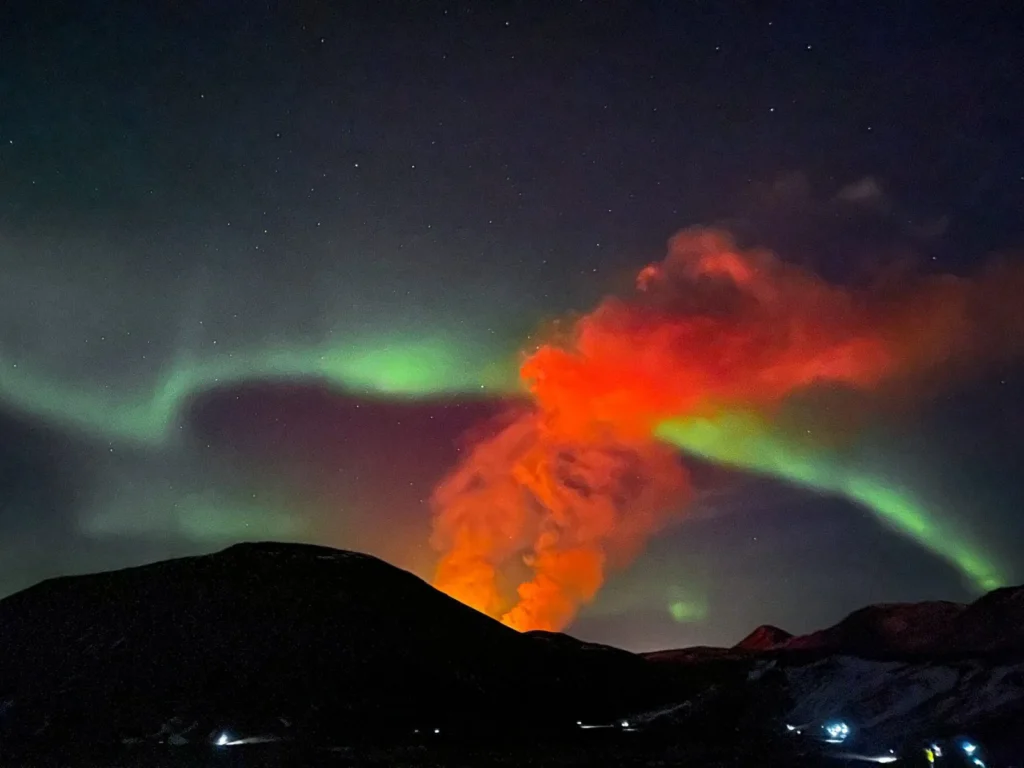
Shaping the Landscape:
- Volcanoes are Iceland’s architects. From moss-covered lava fields to stark black sand beaches and geothermal wonders like hot springs and geysers, much of Iceland’s natural beauty is a direct result of its fiery past and present.
- Despite occasional disruptions, volcanic ash breaks down over time to enrich the soil, supporting agriculture in Iceland’s often harsh climate.
Harnessing Geothermal Power:
Iceland is a world leader in using geothermal energy from the heat beneath the surface in volcanically active areas. This provides a clean and sustainable renewable energy source, making Iceland nearly self-sufficient in power and heating.
Hazards and Disruption:
- While most eruptions in Iceland pose little direct threat to populated areas, lava flows occasionally encroach on roads, farms, and infrastructure.
- Explosive eruptions can eject massive ash clouds, particularly from central volcanoes or subglacial events. These clouds pose a threat to aviation, as demonstrated by the 2010 Eyjafjallajökull eruption that paralyzed European air travel.
- Jökulhlaups are glacial floods caused by subglacial eruptions. Jökulhlaups can be sudden and devastating, washing out roads and bridges and impacting communities.
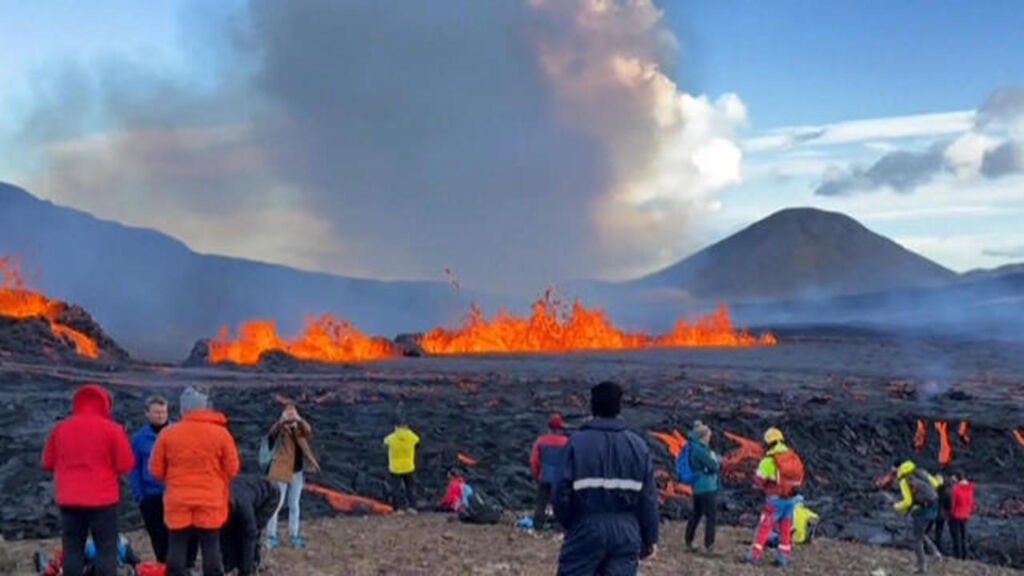
Significant Volcanic Eruptions in Iceland:
Historic Eruptions:
Laki (1783-1784): Laki produced one of the most extensive lava flows in recorded history, a massive fissure eruption that lasted eight months. Toxic gases from the eruption devastated Iceland, leading to widespread famine and hardship across Europe.
Eldgjá (939-940): Another significant fissure eruption, Eldgjá, produced a staggering volume of lava and is suspected to have had a lasting effect on global climate.
Hekla (various): One of Iceland’s most active central volcanoes, Hekla has a long history of eruptions, some quite powerful, dating back to the 12th century.
Recent Eruptions:
Eyjafjallajökull (2010): A subglacial eruption that, while moderately sized, produced a massive ash cloud that disrupted air travel across Europe for several weeks. This highlighted the far-reaching impact of Icelandic volcanism.
Holuhraun (2014-2015): A large fissure eruption in the Bárðarbunga volcanic system, Holuhraun, was significant due to its volume of lava and the release of sulfur dioxide gases.
Fagradalsfjall (2021-2022): This spectacular, long-lasting fissure eruption became a popular tourist destination due to its accessibility and mesmerizing lava flows.
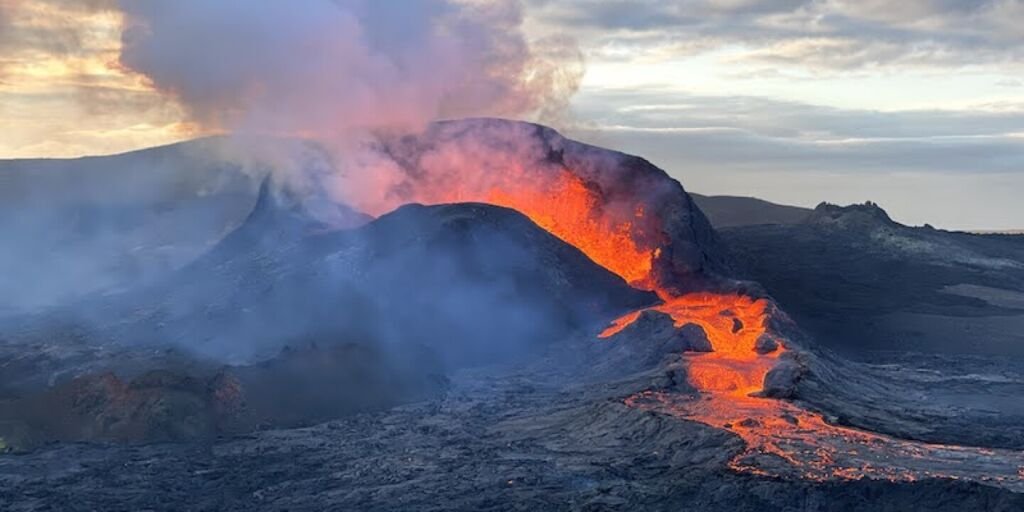
Reykjanes Peninsula (2022-2023): A cluster of smaller fissure eruptions with several short-lived events in recent years showcasing the ongoing volcanic activity in this region.
Conclusion:
In conclusion, Iceland is a land sculpted by fire. Its position on the Mid-Atlantic Ridge, where tectonic plates diverge, directly above a mantle plume, explains why Iceland is so active volcanically. This unique situation gives the island a constant magma supply, resulting in frequent fissure eruptions, explosive central volcanoes, and ice-meets-fire subglacial events.
The fiery forces beneath Iceland have both built and threatened the island across time. Eruptions like Laki and Eldgjá demonstrate the enormous power of Iceland’s volcanoes, while the recent Eyjafjallajökull and Holuhraun eruptions highlight the ever-present potential for both disruption and awe.
Volcanoes have created a land of stunning natural beauty, enriched the soil, and made Iceland a leader in geothermal energy. They are a fundamental part of the island’s identity, a constant reminder of the Earth’s dynamic processes.

